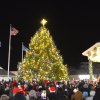Lewes stands at a defining moment. With the Fourth Street Preserve plan now unveiled, the city has a once-in-a-lifetime opportunity to protect the last remaining forest within its limits – 30 acres of unspoiled, historic land that dates back to 1670.
The Greater Lewes Foundation has already made remarkable progress, raising $6.4 million of the $8 million needed to purchase the land. With the Sept. 15 deadline approaching, the foundation is calling on everyone who values nature, history and community to help push the campaign across the finish line.
Those who oppose proposed development in Sussex County are often told to put their money where their mouth is and buy the land. That’s just what’s happening here. This is an investment in Lewes, both for today’s residents and those in future generations.
The concept plan, crafted by landscape architect Rodney Robinson, preserves the land’s natural beauty, creating a haven of native woodlands, pollinator meadows and wildlife habitats. Walking trails will wind through the trees. This isn’t a park for playgrounds and parking lots; it’s a sanctuary – for birds on their migratory journeys, for deer that can often be seen wandering through the trees and for native plants cataloged in expert-led “bio blitzes.”
Importantly, the plan ensures that no buildings will mar the landscape. Instead, the preserve will feature minimal, thoughtful additions like benches and educational kiosks, offering visitors a deeper connection to the natural world around them.
GLF Executive Director Mike Rawl appropriately described the land as Lewes’ own Central Park – wild, restorative, and woven into the city’s history and future.
Robinson also deserves credit. His pro bono work has saved an estimated $100,000 and accelerated the project timeline by a year.
Lewes is known for its vision and its deep sense of place. Let’s show what a community can accomplish when it rallies to protect what matters most. If you’re able, consider donating to the Fourth Street Preserve campaign.























































